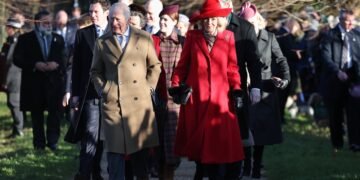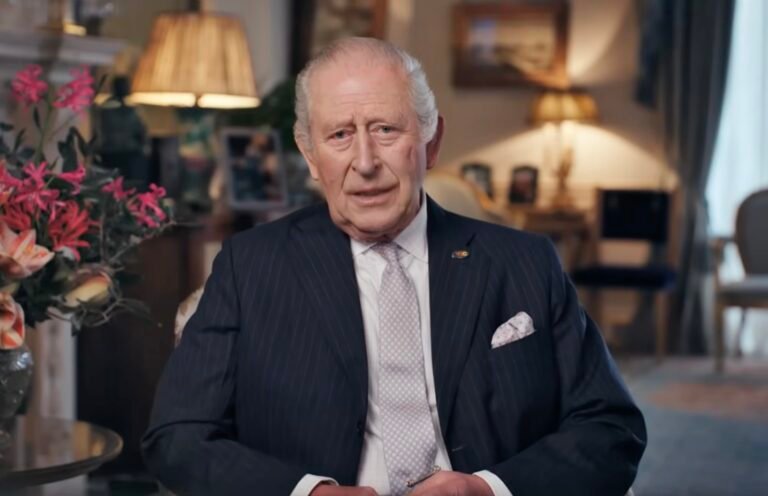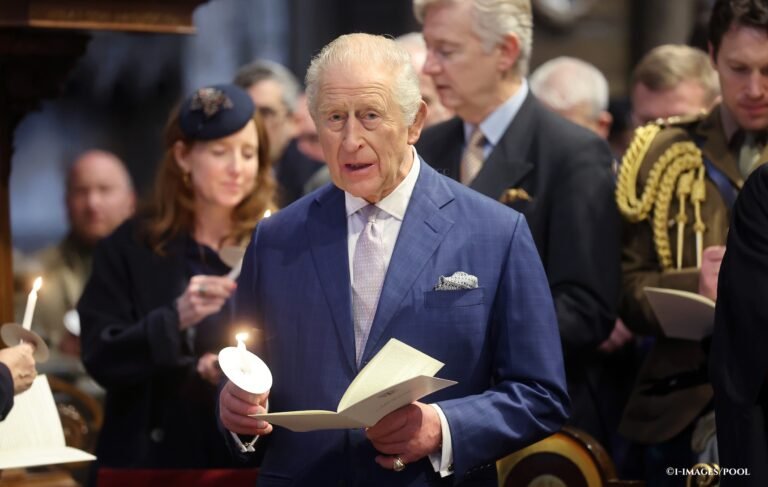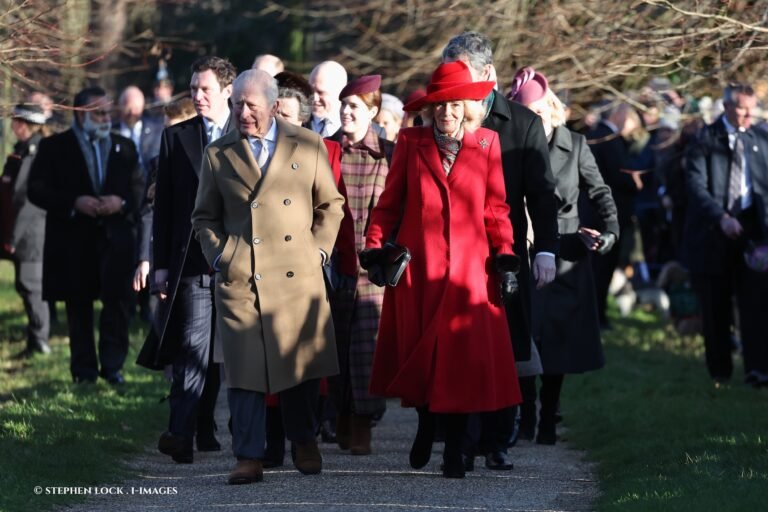Travelling by helicopter to northern Pakistan, The Duke and Duchess of Cambridge spent the third day of their tour walking in the footsteps of Prince William’s late mother, Diana, Princess of Wales, and seeing the effects that global warming is having on Northern Pakistan.
Upon arrival, William and Catherine were gifted with traditional Chitrali hats from the region, as well as a book of photographs of William’s late mother, Diana, who had visited the valley in 1991. During her visit, Diana was given and wore the same Chitrali hat as her daughter-in-law. William also received a lovely embroidered coat while Catherine accepted a beautiful warm shawl that she tried on immediately.
While visiting a remote region in the Hindu Kush mountain range, located in the Chitral District of the Khyber-Pakhtunkwa Province, the royal couple were treated to the beauty of the Chiatibo Glacier, set in Broghil National Park. As they walked around the northern tip of the glacier, they witnessed for themselves, how in recent years, the glacier has rapidly receded due to the warming of the earth’s climate.

As the Duke and Duchess viewed the glacier, Prince William shared that the communities which are “vulnerable to change” need “more education, more awareness and political action” to be able to deal with the increasing effects of climate change.
Additionally, he stated: “The young are starting to get engaged in it.” Prince William then called for a “positive conversation” on climate change among leaders of the world. He has long been known as a keen campaigner for all kinds of environmental causes.
For their tour of the glacier, the Cambridges were accompanied by Dr. Furrukh Bashir, a member of the Pakistan Meteorological Department. The Duke was inquisitive as to what time of year do the glaciers generally tend to flood the surrounding areas and what is the impact that they have on the local communities.
Glaciers in the Hindu Kush mountain range provide water for around 1.6 billion Pakistani’s. According to Dr. Bashir, the area is home to more than 5,000 adequately sized glaciers with a staggering 70% of them in the process of receding. Because of global warming, it is estimated that the Chiatibo Glacier recedes by approximately 10 yards per year. As the glacier melts, the runoff flows downstream towards communities that are located along the riverbanks and creates hazardous flooding. This in turn, creates an enormous depletion in the water supply for these villages.
Dr. Bashir commented: “Scientific communities have agreed global warming is causing glacial retreat. These glaciers are retreating and telling you that climate change is real, global warming is real. A quarter of humanity are dependent on these glaciers.”
The visit by The Duke and Duchess of Cambridge was quite welcomed by all. Dr. Bashir felt that the visit would help to raise awareness of the changing environment in the region. “They are highly influential people and they have a permanent position. If we convince them that this is happening because of climate change, global warming, greenhouse gases, hopefully, they will advocate to reverse global warming and climate change,” he said.
The next stop for the royal couple was the Bumburet Valley in the centre of the Chitral District. The communities in this region are exceedingly isolated and have suffered enormously from the relentless flash flooding that has befallen them in recent years. The Duke and Duchess saw first-hand the tragic devastation that hit the area back in 2015 when flooding caused many boulders to crash down on the village. Because of this, many buildings were demolished and an incredible amount of farmland was destroyed.
William and Catherine spoke to many of the local people who have been affected by the flooding. The locals discussed with them how they are adapting their way of life in response to not only the flooding but also many other challenges set upon them by the changing climate.
Some of the inspiring initiatives led by the community were shown to the Duke and Duchess. Volunteers from the local Emergency Response Team conducted a drill that was instrumental in preventing loss of life during the 2015 floods. Now supported by aid from the UK, the team believes that community education and early warning work was vital to the minimal loss of life that was suffered. One young woman from the group was named Diana and she shared with William and Catherine that she had been named after the Prince’s late mother. The group of volunteers said that they felt the visit was a source of pride for them. They were glad that people will be learning about their community and they will never forget this day.
Additionally, a drill demonstrated by the local Search and Rescue team , illustrated the ability of the team to successfully evacuate casualties across the river. These different tools help to equip the community with the knowledge needed to adjust to the ever changing weather patterns and landscape of the area.

For the final engagement of the day, the Duke and Duchess visited a settlement of the Kalash community named Bombaret. Known for their hospitality, the villagers greeted the Duke and Duchess with a brilliant and dazzling celebration in the village square. Believed to be the descendants of Alexander the Great, the Kalash people are also known for their unique traditions and culture that are not found anywhere else on earth. Their rituals, traditions and customs harken from the lives of the Ancient Greeks. Obviously, the Kalash people are the minority in their area and only number around 4,000 individuals.

The lives of the Kalash people are exceptionally primitive. Their village is devoid of any doctors, mobile phones, or even a newspaper. The road system of the village consists of only dirt. The religion that they follow not only has no name but has neither a written book nor any prophets. The population of the village is non-Muslim and they are culturally and ethnically unlike any other tribe found today. The Kalash are a very proud people and want to strictly adhere to their way of life but they would be open to accessing education for their children and receiving access to some healthcare.
William and Catherine were treated to an exciting array of traditional dance performances and musical selections of the Kalash people. The community outfitted themselves in their vibrant and gloriously coloured traditional attire. The Duchess of Cambridge was gifted with a traditional cap that is worn by the Kalasha women.
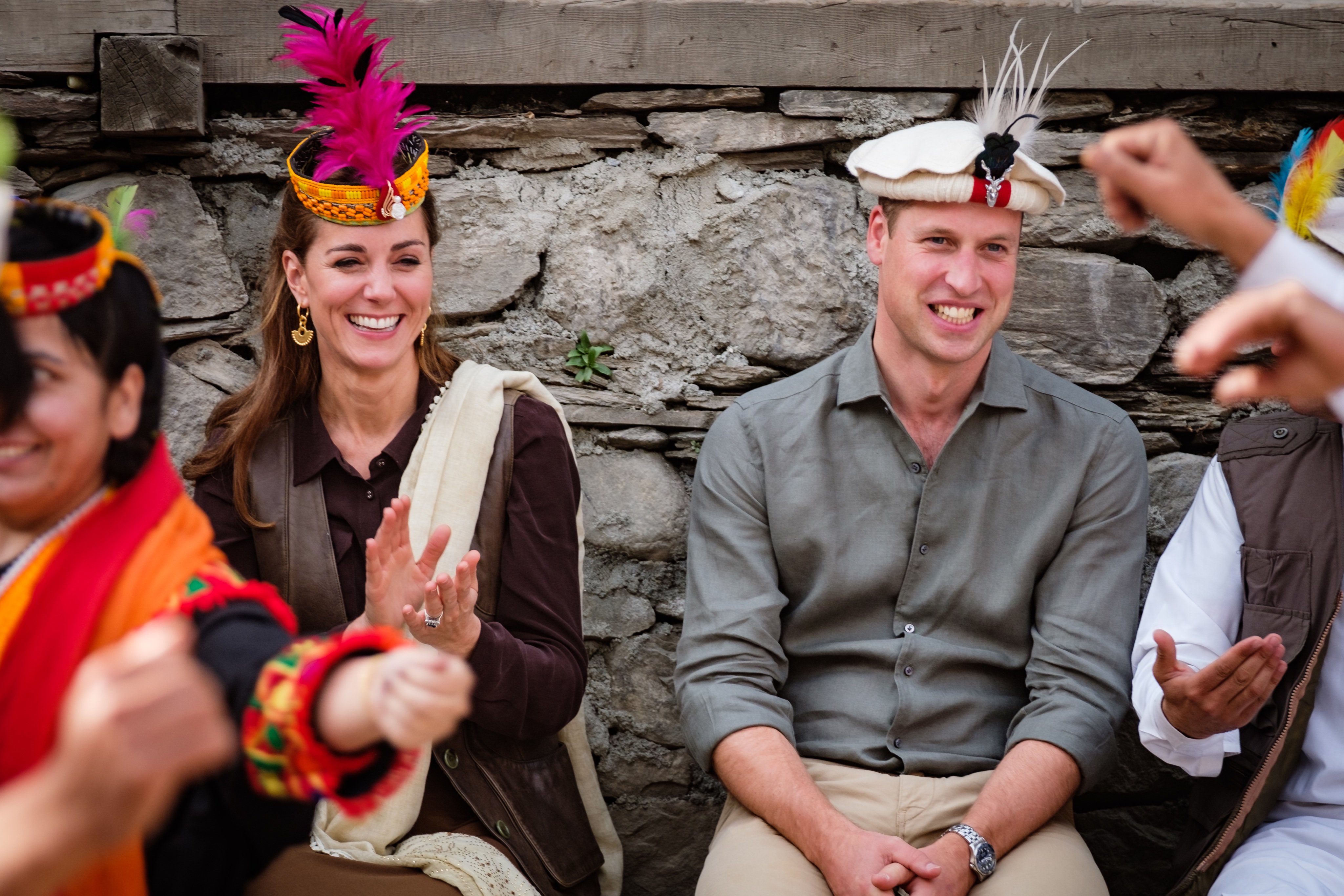

Thank you to the Kalash people in Chitral for the wonderful welcome for The Duke and Duchess of Cambridge today! #RoyalVisitPakistan pic.twitter.com/XNlKuZ2WUd
— Kensington Palace (@KensingtonRoyal) October 16, 2019
Prince William and his wife joined with the young people and little children of the tribe for the celebrations. One administration official stated that the couple took quite a keen interest in learning about the Kalash culture. He additionally expressed: “They were very happy, meeting and shaking hands with everyone.”
Another area of interest for the royal couple was learning about how the Kalash people are able to coexist with surrounding communities that are more modern in their ways of life.
It is hoped that the visit by The Duke and Duchess of Cambridge will encourage and increase tourism in this remote area of Pakistan that is filled with so much beauty.



